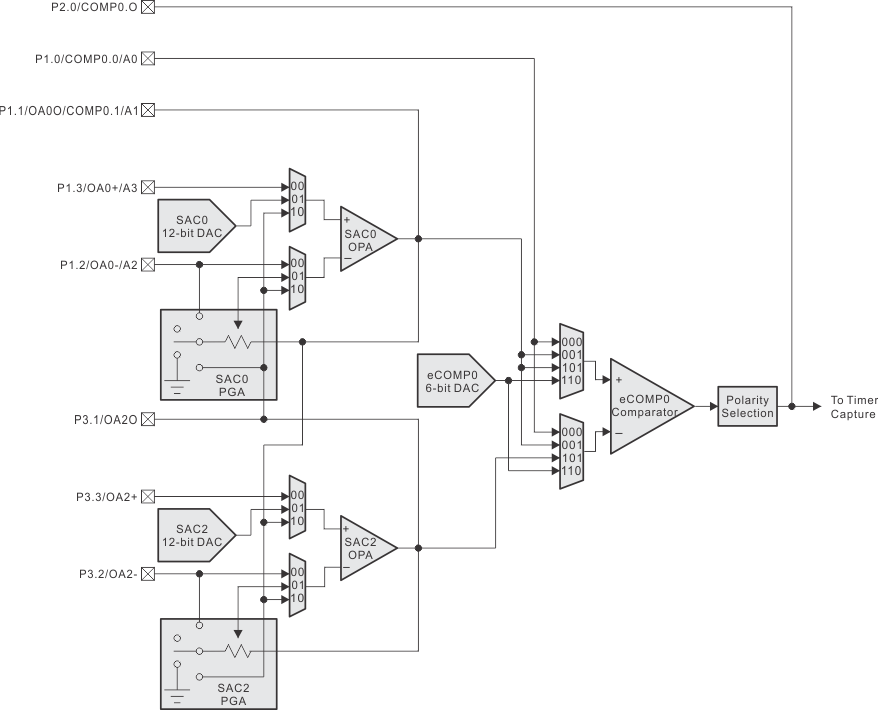SLAA833A May 2018 – October 2019 MSP430FR2353 , MSP430FR2355
- How to Use the Smart Analog Combo in MSP430™ MCUs
- Revision History
3.2 Smart Analog Combo Interconnection With Other Peripherals
In addition to the interconnection between two SAC modules, the MSP430 MCU also supports flexible interconnection between the SAC and other peripherals. As described in Section 2.5, the internal shared reference and timer output are connected to the SAC built-in DAC. The internal shared reference can be used as the DAC voltage reference, and the timer can be used as trigger source for DAC to load data. Besides internal shared reference and timer, SAC is also connected other peripherals like transimpedance amplifier (TIA), enhanced comparator (eCOMP) and ADC.
The peripheral interconnection is device-specific, and Figure 13 shows the interconnection of SAC0, SAC2, eCOMP0, and ADC12 in the MSP430FR2355 MCU. The SAC0 output and the SAC2 output are connected to the two eCOMP0 input channels. This brings some benefit for signal conditioning by comparing the amplifier output and converting the analog output into a digital output. The SAC0 output is also internally connected to ADC channel A1. SAC1 and SAC3 have interconnections with eCOMP1 and ADC that are similar to the interconnections of SAC0 and SAC2. With these interconnections in the MSP430FR2355 MCU, it is possible to achieve full signal chain implementation without any external components or external connections. This kind of one-chip solution helps to save BOM cost and to optimize PCB size.
